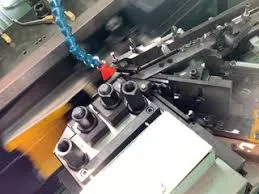
-
 Afrikaans
Afrikaans -
 Albanian
Albanian -
 Amharic
Amharic -
 Arabic
Arabic -
 Armenian
Armenian -
 Azerbaijani
Azerbaijani -
 Basque
Basque -
 Belarusian
Belarusian -
 Bengali
Bengali -
 Bosnian
Bosnian -
 Bulgarian
Bulgarian -
 Catalan
Catalan -
 Cebuano
Cebuano -
 Corsican
Corsican -
 Croatian
Croatian -
 Czech
Czech -
 Danish
Danish -
 Dutch
Dutch -
 English
English -
 Esperanto
Esperanto -
 Estonian
Estonian -
 Finnish
Finnish -
 French
French -
 Frisian
Frisian -
 Galician
Galician -
 Georgian
Georgian -
 German
German -
 Greek
Greek -
 Gujarati
Gujarati -
 Haitian Creole
Haitian Creole -
 hausa
hausa -
 hawaiian
hawaiian -
 Hebrew
Hebrew -
 Hindi
Hindi -
 Miao
Miao -
 Hungarian
Hungarian -
 Icelandic
Icelandic -
 igbo
igbo -
 Indonesian
Indonesian -
 irish
irish -
 Italian
Italian -
 Japanese
Japanese -
 Javanese
Javanese -
 Kannada
Kannada -
 kazakh
kazakh -
 Khmer
Khmer -
 Rwandese
Rwandese -
 Korean
Korean -
 Kurdish
Kurdish -
 Kyrgyz
Kyrgyz -
 Lao
Lao -
 Latin
Latin -
 Latvian
Latvian -
 Lithuanian
Lithuanian -
 Luxembourgish
Luxembourgish -
 Macedonian
Macedonian -
 Malgashi
Malgashi -
 Malay
Malay -
 Malayalam
Malayalam -
 Maltese
Maltese -
 Maori
Maori -
 Marathi
Marathi -
 Mongolian
Mongolian -
 Myanmar
Myanmar -
 Nepali
Nepali -
 Norwegian
Norwegian -
 Norwegian
Norwegian -
 Occitan
Occitan -
 Pashto
Pashto -
 Persian
Persian -
 Polish
Polish -
 Portuguese
Portuguese -
 Punjabi
Punjabi -
 Romanian
Romanian -
 Russian
Russian -
 Samoan
Samoan -
 Scottish Gaelic
Scottish Gaelic -
 Serbian
Serbian -
 Sesotho
Sesotho -
 Shona
Shona -
 Sindhi
Sindhi -
 Sinhala
Sinhala -
 Slovak
Slovak -
 Slovenian
Slovenian -
 Somali
Somali -
 Spanish
Spanish -
 Sundanese
Sundanese -
 Swahili
Swahili -
 Swedish
Swedish -
 Tagalog
Tagalog -
 Tajik
Tajik -
 Tamil
Tamil -
 Tatar
Tatar -
 Telugu
Telugu -
 Thai
Thai -
 Turkish
Turkish -
 Turkmen
Turkmen -
 Ukrainian
Ukrainian -
 Urdu
Urdu -
 Uighur
Uighur -
 Uzbek
Uzbek -
 Vietnamese
Vietnamese -
 Welsh
Welsh -
 Bantu
Bantu -
 Yiddish
Yiddish -
 Yoruba
Yoruba -
 Zulu
Zulu
Hydraulic Thread Rolling Equipment for Precision Metal Fabrication and Enhanced Efficiency
Understanding Hydraulic Thread Rolling Machines
In the realm of machining and manufacturing, the precision and efficiency of producing threaded components have seen significant advancements. Among these advancements, hydraulic thread rolling machines have emerged as essential tools that offer a superior solution for creating intricate thread profiles on various materials. This article aims to provide an in-depth exploration of hydraulic thread rolling machines, their operational mechanisms, advantages, and applications.
What is a Hydraulic Thread Rolling Machine?
A hydraulic thread rolling machine is a specialized piece of equipment designed to create threads on cylindrical workpieces through a process called rolling. Unlike traditional cutting methods, which remove material to form threads, thread rolling is a cold forming process that displaces material to create the desired thread profile. This method enhances the strength and precision of the threads, making it a preferred choice in many manufacturing industries.
Operating Mechanism
The operation of a hydraulic thread rolling machine relies on hydraulic pressure to facilitate the rolling process. In a typical setup, the machine consists of three primary components the rollers, the hydraulic system, and the workpiece holder.
1. Rollers Two or more hardened steel rollers, which have the desired thread profile, are positioned in close proximity to one another. As the machine operates, these rollers are rotated simultaneously, forcing them against the workpiece as it moves through the rollers.
2. Hydraulic System The hydraulic system generates the necessary pressure to apply force on the rollers, allowing them to engage and displace the material of the workpiece. The use of hydraulic power ensures that the process is smooth and capable of handling high production volumes.
3. Workpiece Holder This component secures the workpiece in place as it passes through the rollers. The holder must be adjustable to accommodate various sizes and shapes of workpieces.
During the rolling process, as the workpiece is fed into the rollers, the material is extruded and formed around the contours of the rollers, effectively producing the desired thread pitch and profile without any waste of material.
hydraulic thread rolling machine

Advantages of Hydraulic Thread Rolling Machines
Hydraulic thread rolling machines offer several advantages over traditional machining methods, including
- Increased Strength The cold rolling process enhances the grain structure of the material, resulting in threads that are significantly stronger than those produced through cutting methods. This is particularly beneficial for applications requiring high tensile strength.
- Dimensional Accuracy The rolling process allows for high precision in thread dimensions, leading to better fitting components and improved performance in assemblies.
- Material Efficiency Since thread rolling displaces material rather than removing it, there is less waste. This becomes increasingly important in environments with stringent material cost control.
- Faster Production Rates Hydraulic thread rolling machines can produce threads at a much higher speed than traditional machining, thus reducing cycle times and increasing overall productivity.
Applications
Hydraulic thread rolling machines are widely used across various industries, including automotive, aerospace, and construction. They are essential for manufacturing components such as bolts, screws, and studs, where high strength and precision are critical. These machines are also employed in the production of parts that require specific thread forms and configurations, catering to diverse engineering needs.
Conclusion
Hydraulic thread rolling machines represent a cornerstone of modern manufacturing technology. Their ability to produce high-strength, precise threads quickly and efficiently makes them invaluable in many industrial applications. As manufacturing continues to evolve, the role of such advanced machinery will only grow, highlighting the importance of understanding and utilizing hydraulic thread rolling technology in production settings. By embracing these innovations, manufacturers can enhance their operational efficiency and product quality significantly.
